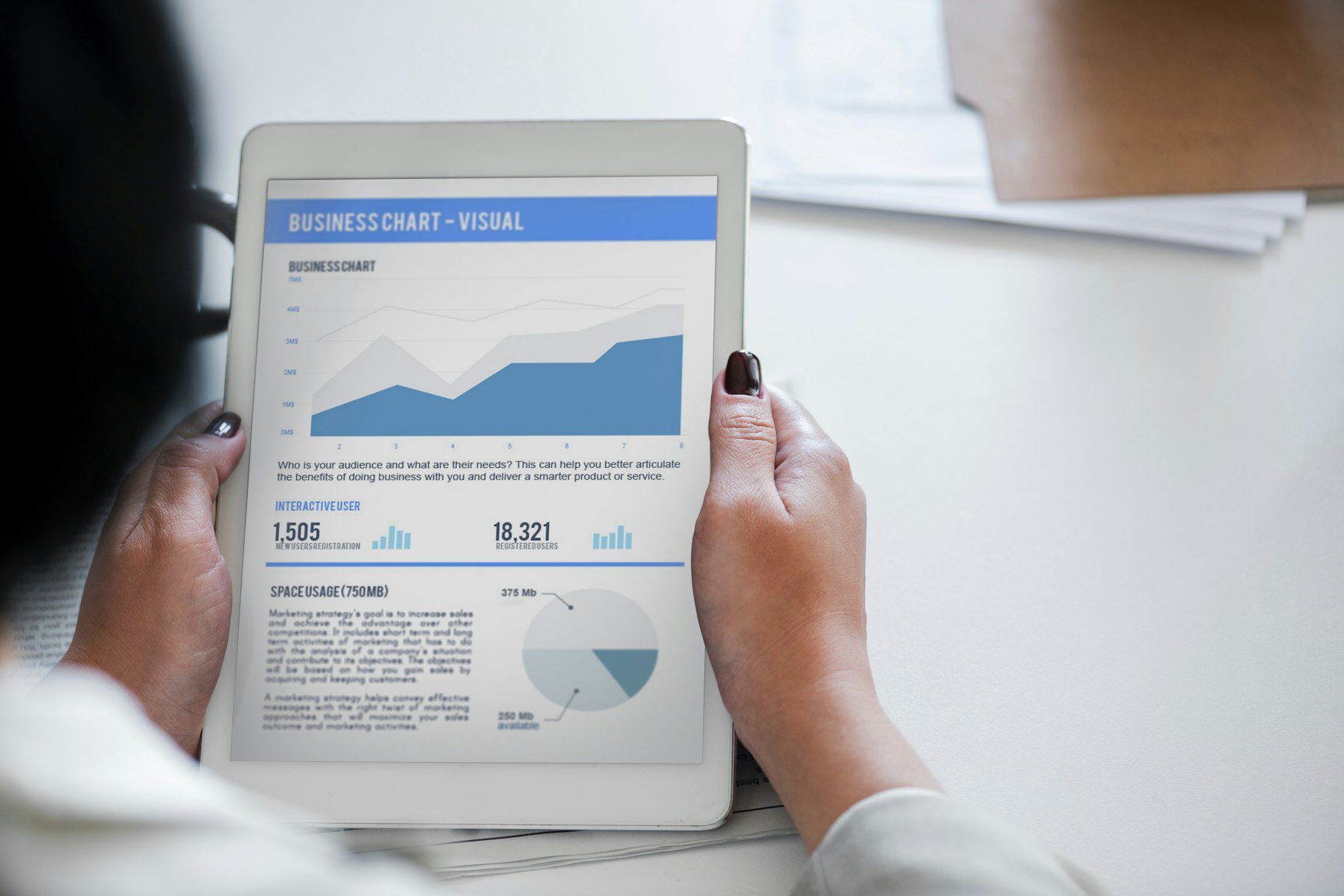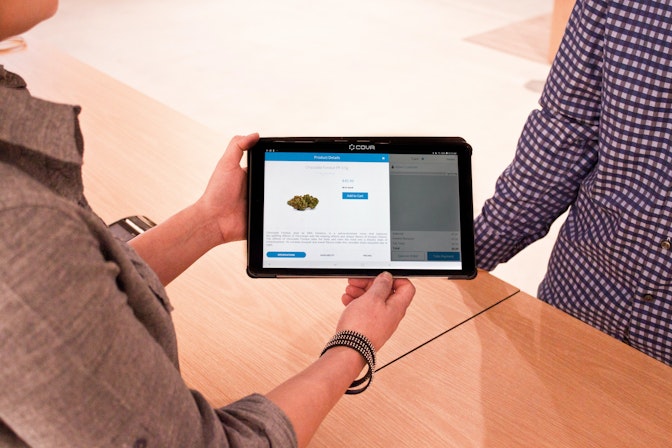Upselling and cross-selling can help you make more money with dropshipping. They help in these two primary ways:
- Make more sales
- Increase the amount of money each customer spends
And, let’s cut to the chase:
Getting new customers is tough.
It’s much easier and more cost-effective to increase the amount each customer spends with you.
In fact, it’s anywhere from 5-25 times more expensive to acquire a new customer than it is to retain an existing one.
Plus, a massive 40% of an ecommerce store’s revenue is created by only 8% of its customers.
That’s crazy, right?
Bottom-line?
If you don’t have strategies in place to increase your customer’s average order value, you’re missing out…
How do you scoop up all that cash?
Enter upselling and cross-selling.
These proven, time-tested strategies can help you earn more money from your customers.
In fact, way back in 2006, Amazon reported that 35% of its revenues were a direct result of their cross-selling and upselling efforts.
Your current customers are ready to buy from you.
All you have to do is give them a little nudge to increase the average order value. In this article, I’m going to show you how to upsell and cross-sell for more gains.
You’ll learn:
- What upselling and cross-selling are.
- The subtle, but crucial differences between the two.
- 3 vital tips to get the most out of your upsells and cross-sells.
- 4 ways to massively boost sales with upselling and cross-selling.
- 6 tools that you can use to put these sales tactics into action.
Ready? Let’s get into it.
Post Contents
- What Is Cross-Selling?
- Does Cross-Selling Work?
- What is Upselling?
- Why Upselling Is Important?
- Which is Better: Upselling or Cross-Selling?
- 4 Vital Tips to Get the Most out of Upselling and Cross-Selling
- 4 Ways You Can Massively Boost Sales With Upselling and Cross-Selling
- Summary



What Is Cross-Selling?
Cross-selling is a sales tactic used to generate more sales by suggesting related or complementary products to customers. As they have already committed to making a purchase, addition products are easier to promote to them. Or more simply, cross-selling can be summed up by the iconic McDonald’s phrase “Would you like fries with that?”. When cross-selling, avoid promoting products that don’t make sense or may confuse.

→ Click Here to Launch Your Online Business with Shopify
The key is to keep it natural and relevant. For example, if you sell hair-dryers, you could cross-sell products like hair brushes, pins, or claws. And, if you sell t-shirts, you could cross-sell baseball caps, tote bags, or hoodies.
Cross-selling should improve the buying experience. And, the products you cross-sell should help the customer get more value from their initial purchase.
Let’s take a look at how Dollar Shave Club does it.
When you add a product to your basket and head to the checkout, they present you with related products:
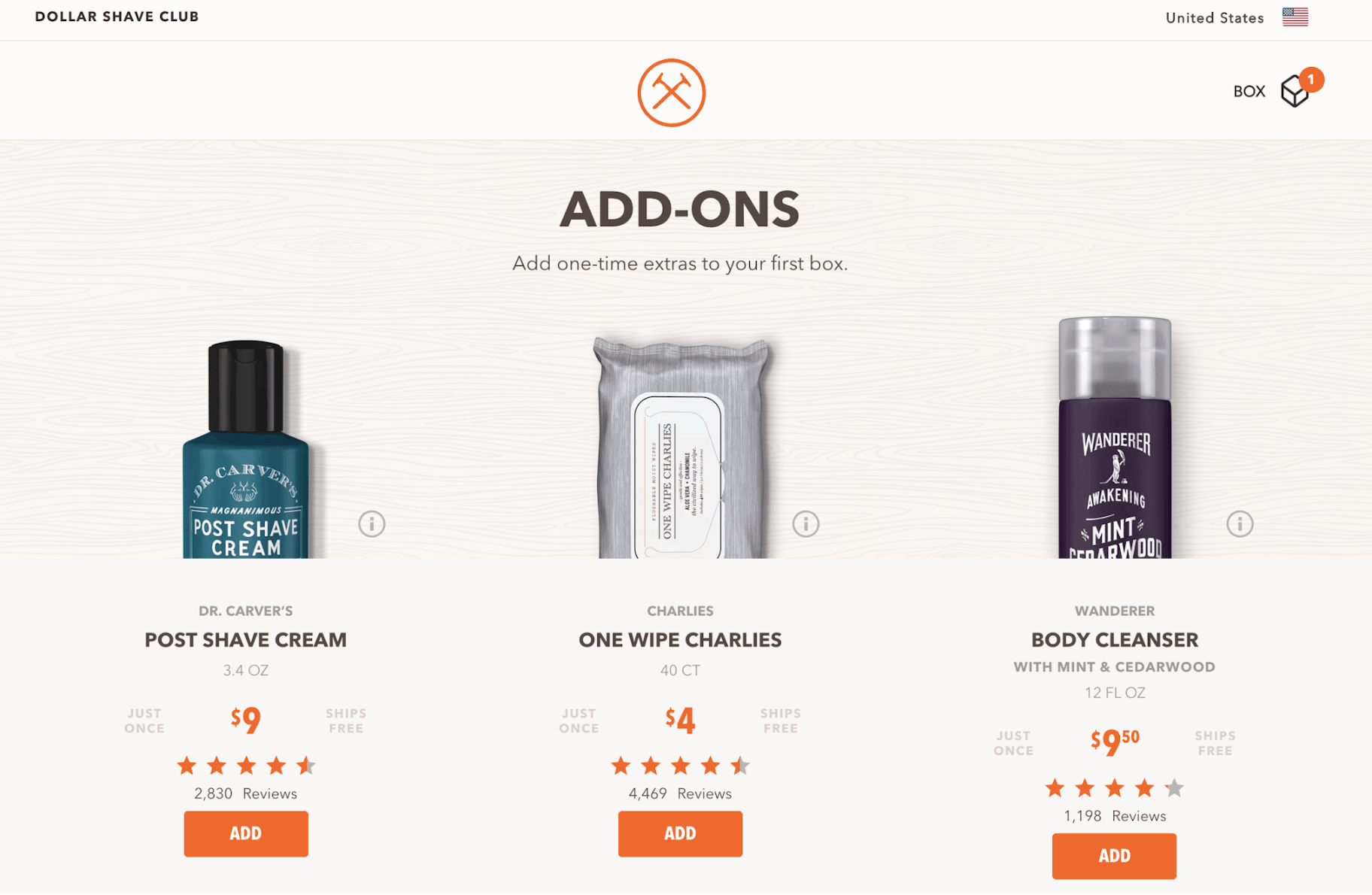
It’s simple, sleek, and relevant. A customer who’s buying a razor is extremely likely to be interested in ‘Post Shave Cream.’
Does Cross-Selling Work?
Yes, it really does! Cross-selling techniques, like product recommendations, can drive between 10-30% of revenue. That is 10-30% more revenue you can make by make simple changes to your website and sales process. Through this article, we will provide numerous examples of cross-selling techniques. The aim is to show you how to increase your revenue without needing to find new customers.
What is Upselling?
Upselling is a sales technique used to persuade customers to purchase a more expensive or upgraded version of a product. If a person is already buying a product it can be easier for them to consider another, slightly different, option. Or more simply, upselling can be summed up by the McDonald’s phrase, “Would you like to supersize your order?” Remember, the aim is to deliver more value to your customers.
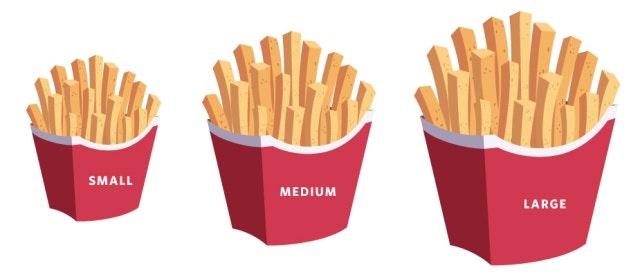
For example, if you sell sunglasses, you could upsell sunglasses that have polarized lenses or UV protection. In this instance, your customer may not have considered protecting their eyes with polarized lenses. They could be thankful for the reminder as it’s helpful.
And, given the choice, most people would prefer a premium version of your products.
Let’s look at an example of upselling from Dollar Shave Club. Here, they present their products side-by-side so that buyers can compare the benefits of each.
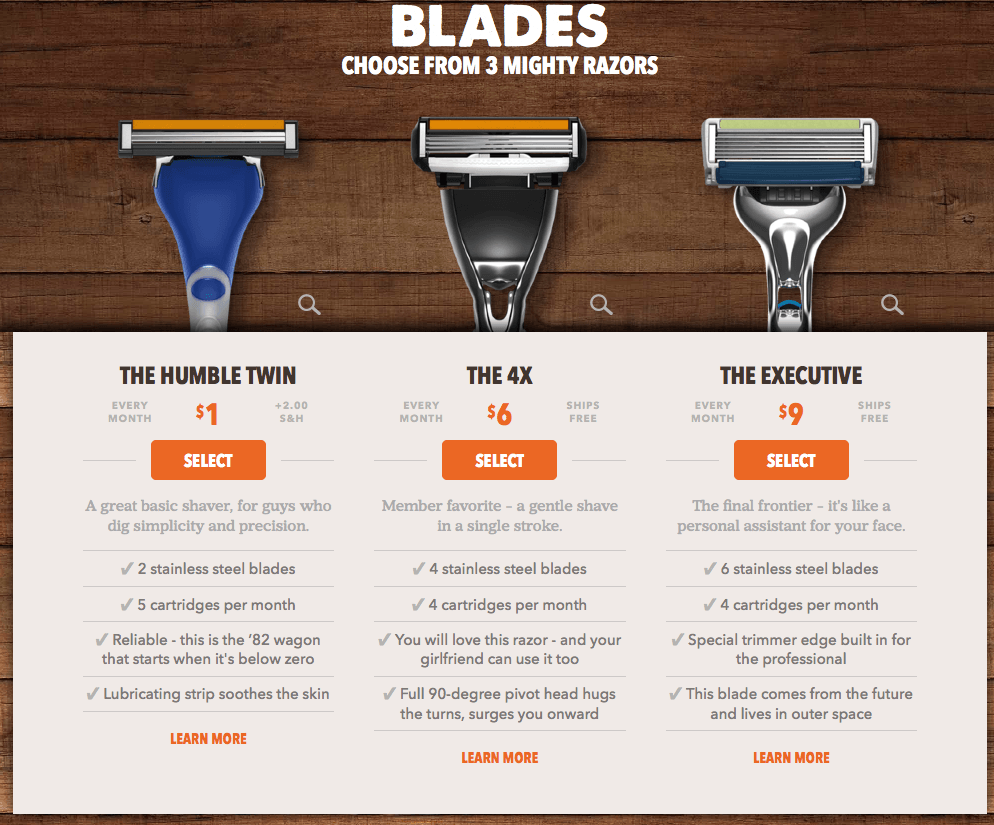
The message is clear:
“Sure, you could get the inexpensive razor — it’s great. But, you can get a better razor, that provides a better shave for just a few bucks more.”
And lastly, you have bundles.
Bundling products together is primarily a cross-selling technique, but many bundles include upsells. Here, Dollar Shave Club present bundles of their products:
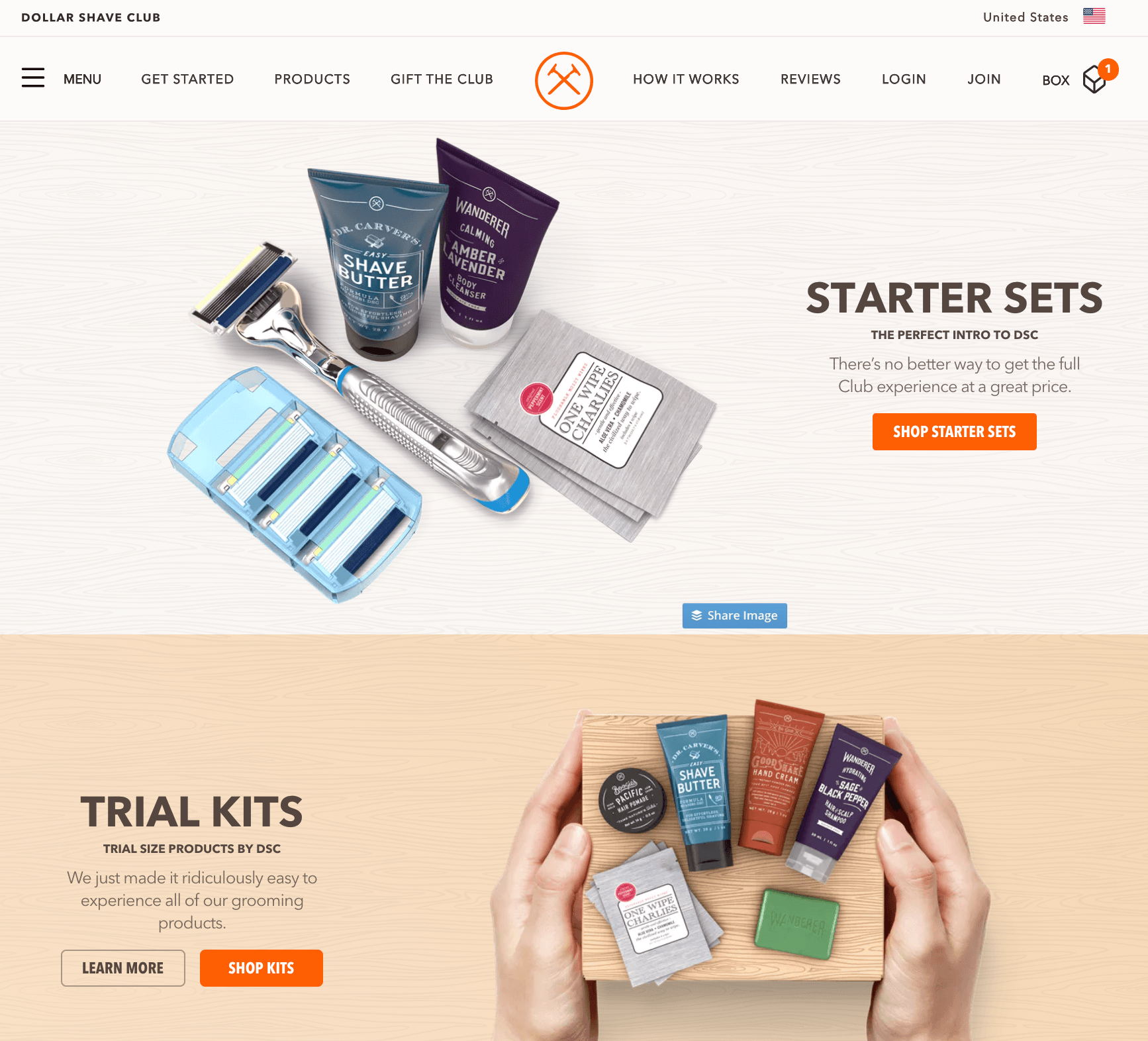
Once again, the message is simple:
“If you’re buying a razor, you’re going to need blades, shaving cream, and moisturizer. So, this convenient bundle not only makes your life easier, it saves you money.”
Why Upselling Is Important?
Upselling has a direct impact on your sales figures that can be tracked closely through a CRM system. It can be used to bring in new customers or to sell to existing ones. Upselling is an important sales tactic for both of these groups as it helps your bottom line and adds value to your customers.
Which is Better: Upselling or Cross-Selling?
Upselling and cross-selling are obviously very similar.
They both focus on providing more value to customers by prompting them to consider additional products and variations.
And, in both cases, the business objective is to increase the average order value (often referred to as AOV).
So, should you do both? Absolutely.
You should definitely use a combination of upselling and cross-selling techniques on your dropshipping store to maximize revenue.
But, it’s best to focus on upselling first.
Why?
Because according to data from Predictive Intent’s clients, upselling performs 20 times better than cross-selling when it comes to product pages.
The graph below shows that upselling accounts for over 4% of sales, whereas cross-selling accounts for 0.2% of sales.
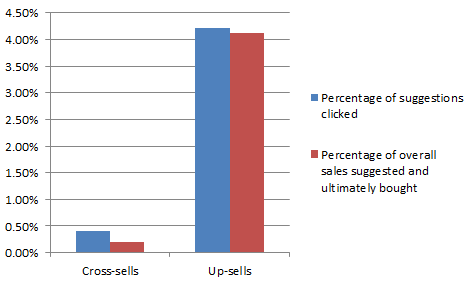
That said, cross-selling is more effective when presented on the checkout page. In this case, data showed that cross-selling drives sales by up to 3%.
Bottom-line?
Start upselling first, and then add cross-selling tactics afterward.
Okay, with me so far?
4 Vital Tips to Get the Most out of Upselling and Cross-Selling
Before discussing how to implement upselling and cross-selling tactics to increase sales, it’s important to understand four key points:
-
Put The Customer First
Upselling and cross-selling are not dirty, sleazy sales tactics. At least, they aren’t if you do them right.
Let me break it down for a sec: Your business isn’t about you.
Ever.
It’s about providing value, and fulfilling your customers’ needs and desires — and, the most successful business people live by this.
Take Jeff Bezos.
He started Amazon from nothing and is now the richest man in the world.
How did he do it?
Bezos said, “We’ve had three big ideas at Amazon that we’ve stuck with for 18 years, and they’re the reason we’re successful: Put the customer first. Invent. Be Patient.”
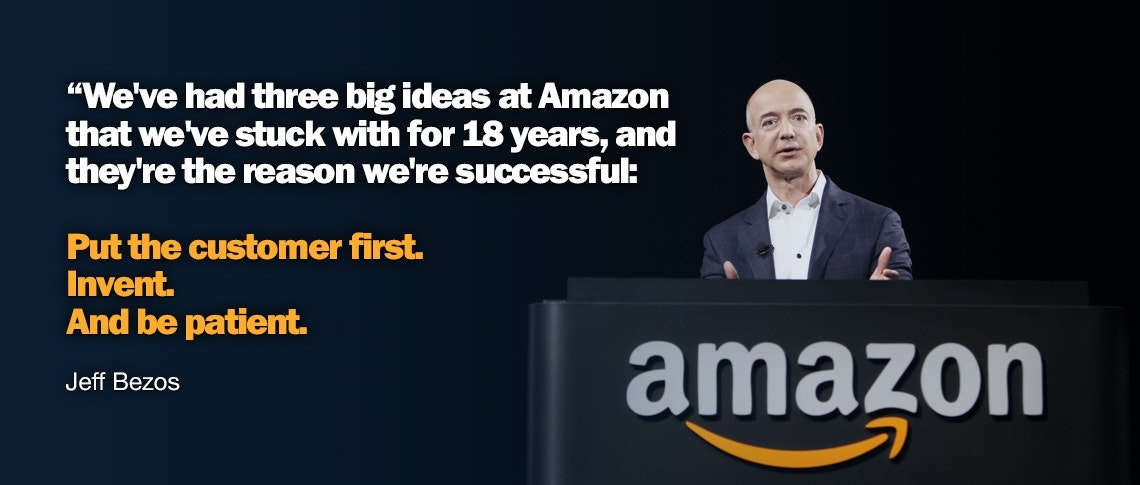
Put the customer first.
Hey, if it worked for Jeff, right?
So, the key to success in upselling and cross-selling is to first understand what your customers value. And, then provide that value through additional products or features, and improved customer experience.
In short: Help your customers.
When you use upselling and cross-selling correctly, customers are genuinely grateful for the choice. They are given options and feel like they got a better deal when they buy something.
-
Don’t Overdo It
Let’s be frank: No one likes to be blatantly sold to.
So, overwhelming your customers with upselling and cross-sell offers is likely to damage their perception of your brand.
You must be tactful.
So, find ways to offer upsells and cross-sells in ways that truly improve the customer experience.
It can be counter-productive to provide customers with too many options anyway.
Why?
Because the paradox of choice states that the more options buyers have, the more difficult it becomes to make a decision.
Buyers can get ‘analysis paralysis,’ and end up making no decision at all…
So, don’t offer too many upsells or cross-sells.
Instead, try to focus on just the most relevant, and appealing three or four offers.
-
Don’t Upsell More Than 25 Percent
The ‘rule of 25’ is just a general rule of thumb — but it’s handy when choosing your offers.
Here’s how it works:
When choosing upsell offers, avoid suggesting products that will increase the overall order by more than 25 percent.
For example, if the product the buyer is looking at costs $100, avoid trying to upsell them to a version that costs more than $125.
It’s simple but effective.
Keeping the upsell below 25 percent will improve the chances of increasing your average order value.
-
Demonstrate Value
Customers need to trust that there is value in buying or spending more with your brand. Merely providing recommendations of upselling or cross-selling opportunities is not enough. Add testimonials or customer reviews to pages before purchase. Include them in your email confirmation of purchase to reinforce positivity from a sale.
Okay, now you’ve got the foundations under your belt, it’s time to dig into how you can use upselling and cross-selling to boost your dropshipping sales.
Ready? Let’s do it.
4 Ways You Can Massively Boost Sales With Upselling and Cross-Selling
You get three chances to upsell and cross-sell to your website visitors:
- Before they buy,
- During the checkout process,
- And, when they’ve completed their purchase.
And, there are tons of different ways that you can cross-sell and upsell to customers during these three stages.
Let’s take a look at some of the tactics and tools that you can use in each stage.
First up?
-
Upselling and Cross-Selling on Your Product Pages
Let’s look at upsells first.
Apple provides a great example of upselling on a product page. Here, they present the different versions of their MacBook Pro:
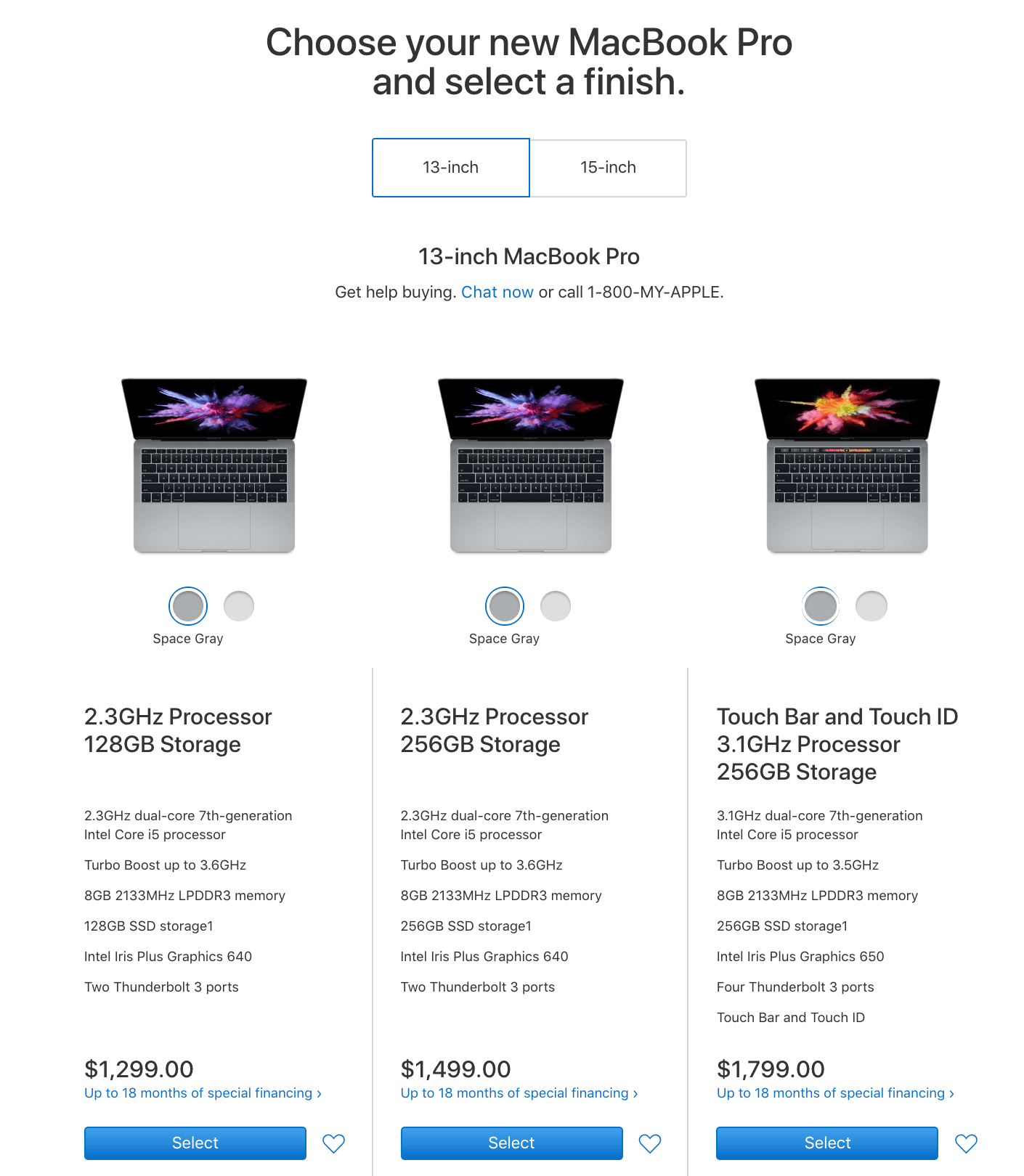
And, by presenting the product like this, buyers can clearly evaluate the different features and benefits that upgrading will provide.
It’s simple but effective.
Just like in our Dollar Shave Club example earlier, upsells are often presented through side-by-side comparisons.
Now let’s look at ways to include cross-selling on your product pages.
A common method is to display related products or recommendations at the bottom of your product page.
For example, Asos includes an upsell to their ‘Buy The Look’ section at the bottom of their product pages.
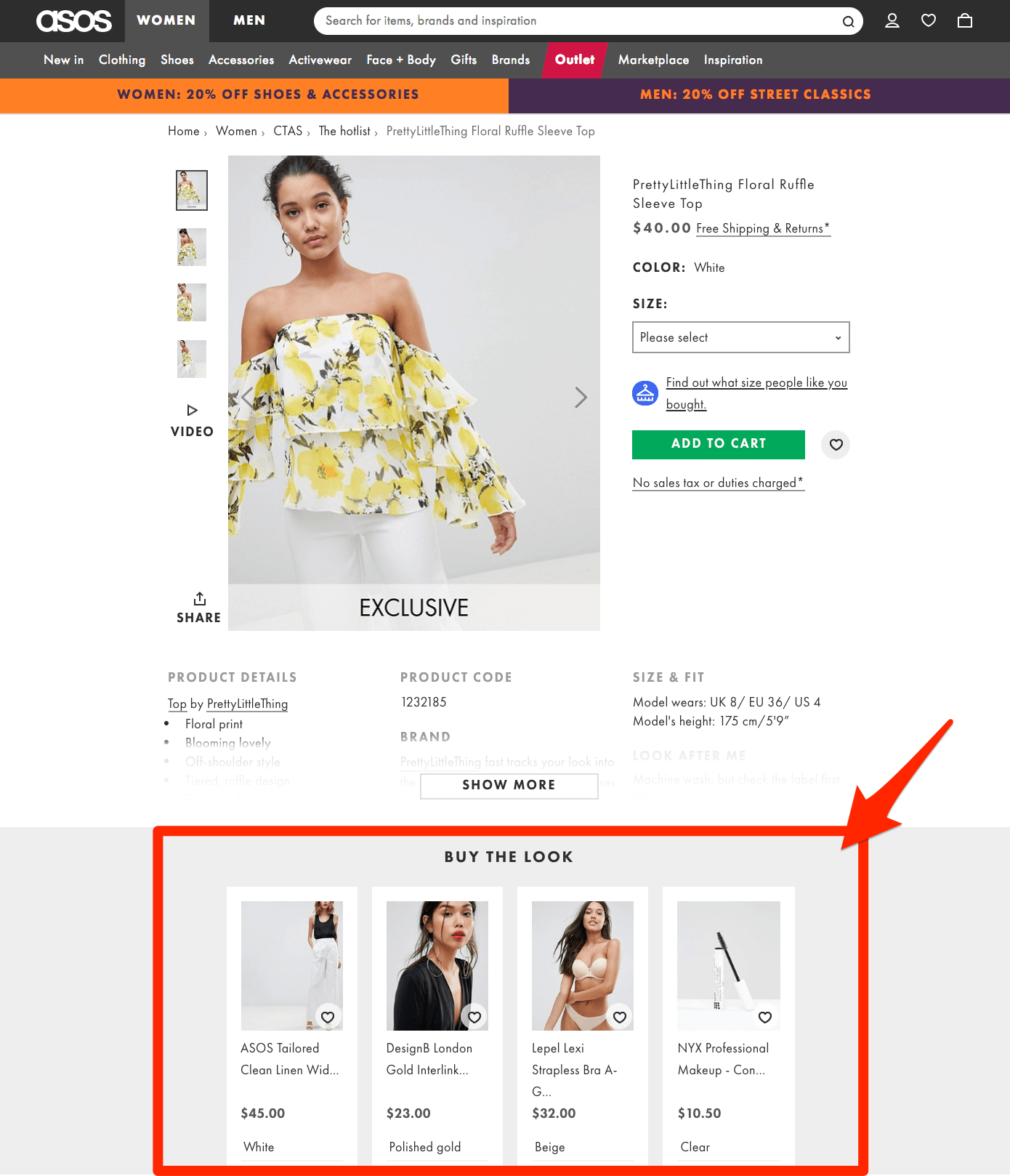
But, they take it one step further by adding another section under this section. This one features more products under the title “you might also like”, adding more choice for the customer.
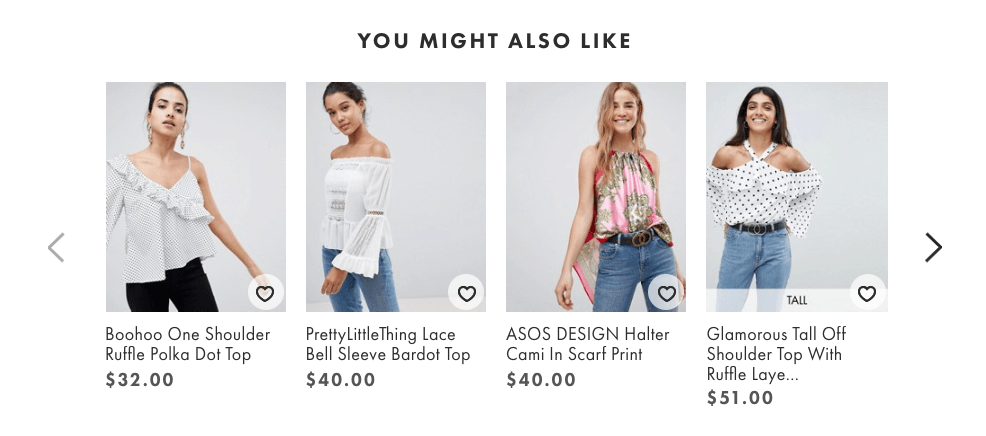
And these types of product recommendations can be extremely effective.
In fact, according to Forrester Research analyst Sucharita Kodali, product recommendations are responsible for an average of 10-30% of eCommerce site revenues.
That’s awesome.
So, it’s no wonder that this type of cross-selling has become a staple of product pages.
Okay, but how do you actually do it?
Well, there’s a chance that these features are already built into your store’s theme.
But if not, you can check out the Shopify App Store. You’ll find tons of cross-selling and upselling goodies over there.
-
Upselling and Cross-Selling During the Checkout Process
The checkout process provides ample opportunities for upselling and cross-selling.
Let’s look at another powerful upsell example from Apple.
Once a customer has chosen their MacBook Pro, Apple provides a selection of highly relevant and desirable upsell offers:
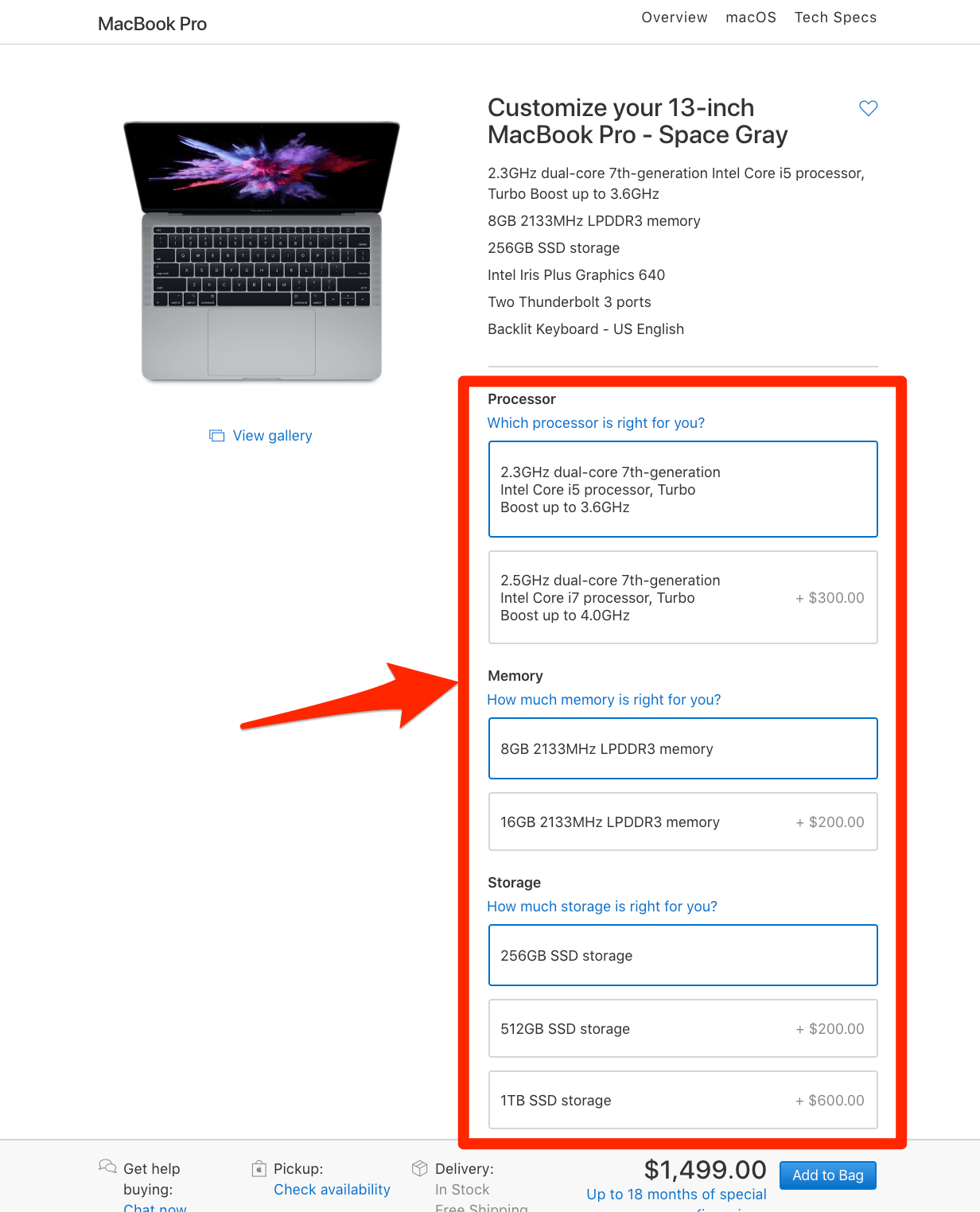
In this next example, when a customer clicks ‘Add to Cart’ to buy a camera, they have the opportunity to additionally buy batteries:
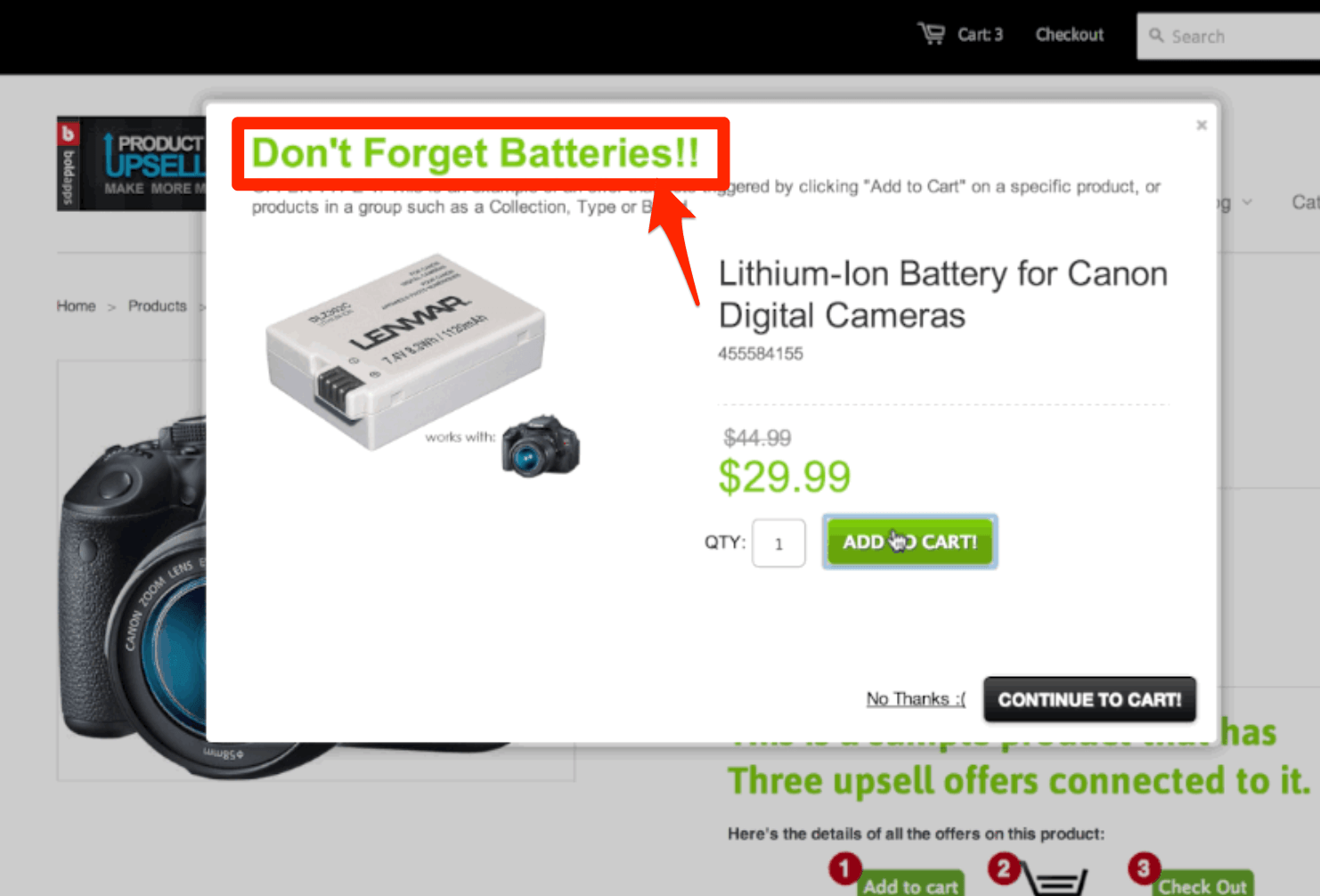
And, in this last example, customers are presented with cross-sell offers, and a coupon code when they’ve placed an order:
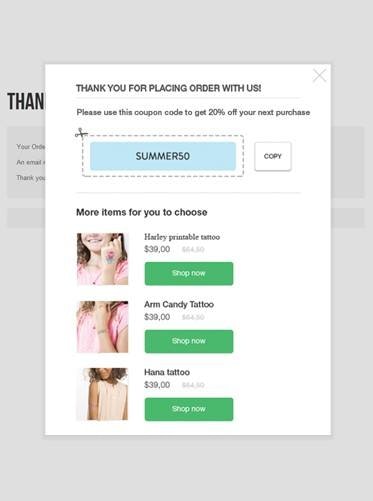
It’s fair to say that people tend to pay more attention to checkout pages than other pages on your website. It’s where they enter their billing information, and they don’t want to mess up their order.
So, take advantage of this extra attention and use it to provide more value for your customers.
Once again, you can use Recommendify to upsell and cross-sell during the checkout process. Or, consider this leading app:
Shopify App: Product Upsell
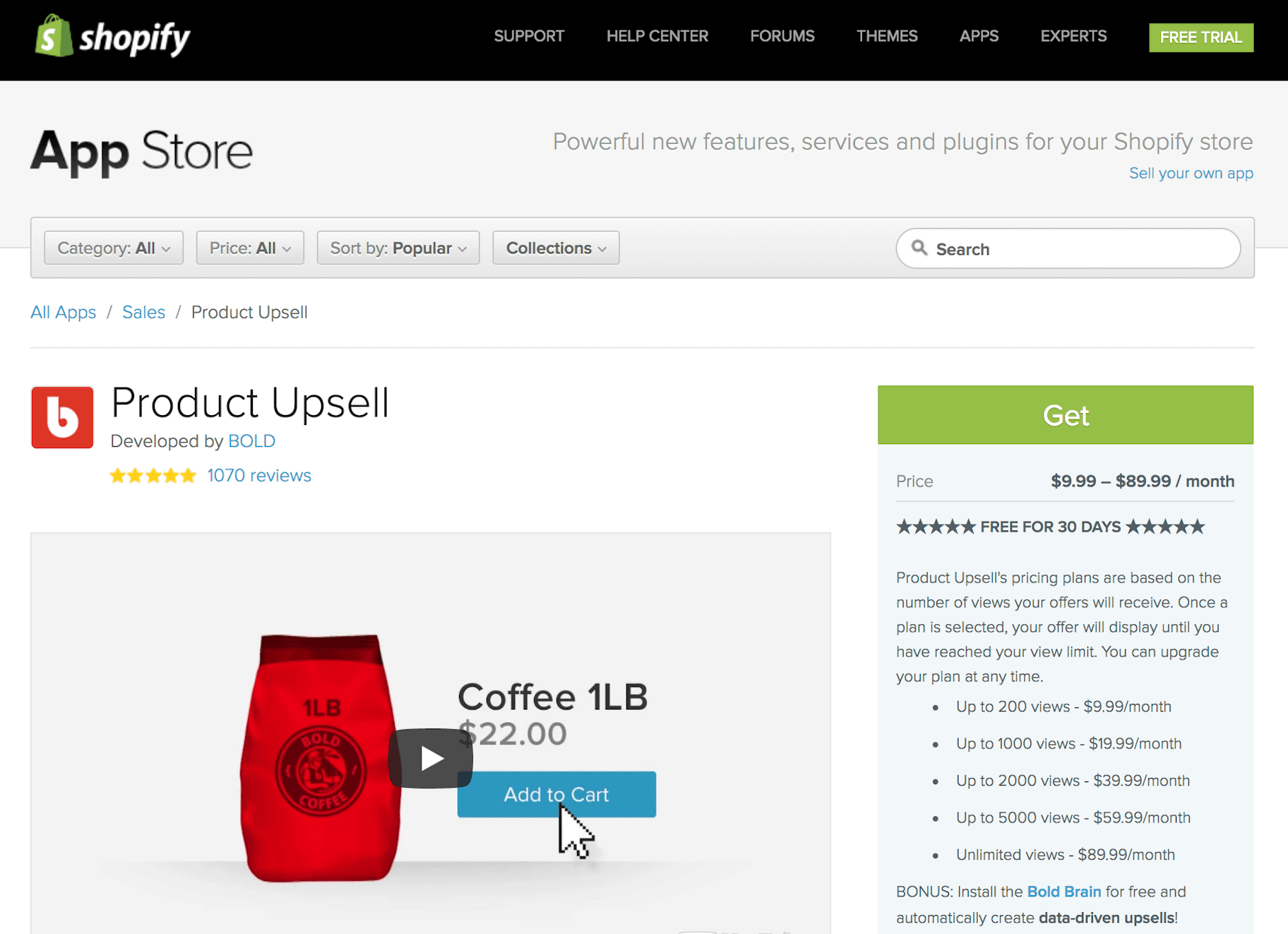
This app from Bold Apps is one of the most popular apps in the Shopify App store and has over 500 reviews.
It’s loaded with features.
And it lets you display relevant upsell and cross-sell based on what’s in a customer’s cart, and their total cart value.
It allows you to add time-sensitive offers to increase urgency:
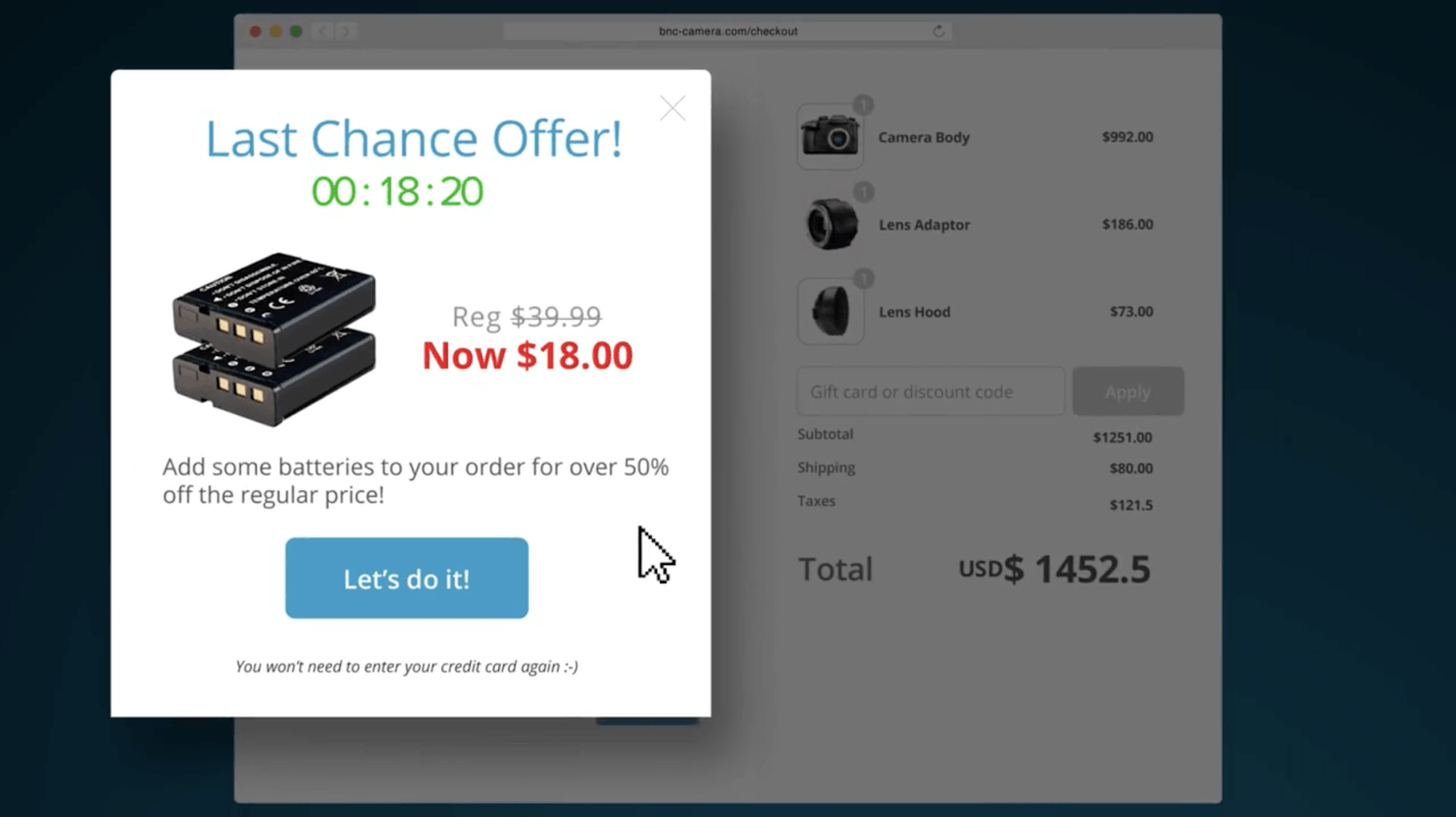
Product Upsell is free for 30 days, and then $9.99-$59.99 a month depending on the number of views you receive.
-
Upselling and Cross-Selling in Your Email Receipts
Check this out:
The market research firm Econsultancy asked companies, “How do you rate the following channels in terms of return on investment?”
Top dog?
You guessed it: Email marketing.
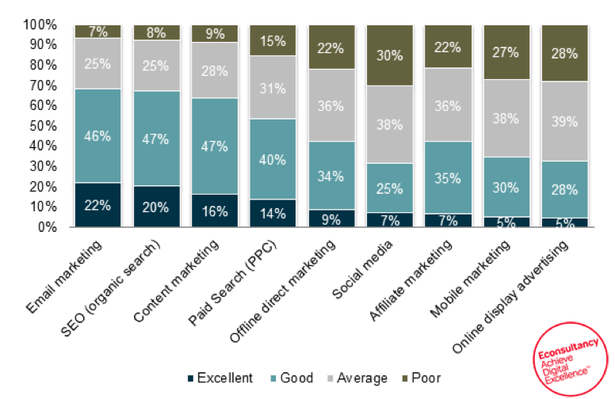
Not social media, content marketing, or even pay-per-click advertising. Email marketing is the most effective sales channel.
But, that’s not all.
According to the Direct Marketing Association, email marketing has an ROI of 4,300%
That’s crazy.
In other words, for every $1 spent on email marketing, the average return is $44.25.
But, here’s where it gets really interesting.
Compared to the average email open rate of 22%, purchase receipt emails get an average open rate of a whopping 71%.
This means that purchase receipt emails get the highest engagement scores out of all the emails you send.
By far.
This makes perfect sense when you consider that people want to double-check their order subsequent to payment. They will pay attention to make sure everything went through okay.
Take advantage of this attention. Send them personalized follow-up emails to entice them to buy more.
In this cross-selling example, Huckberry dedicates part of their purchase receipt email to showcase “trending gear.”
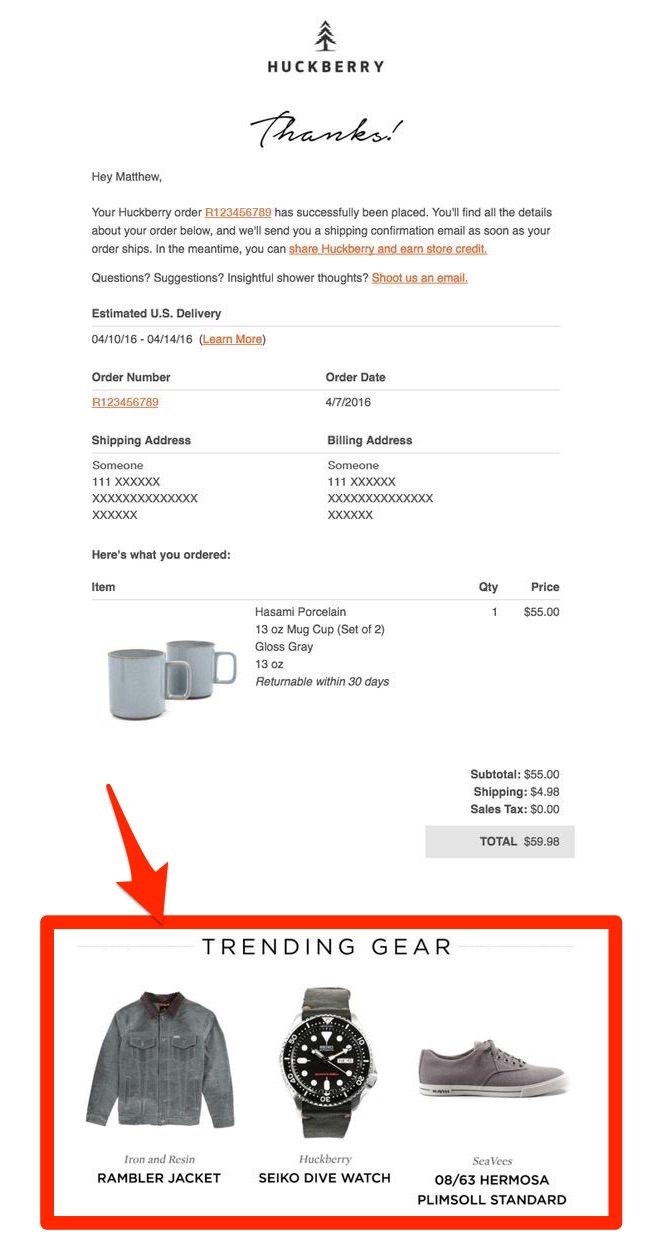
Email receipts are a great opportunity to upsell to current customers. Offer them a coupon code, discount, or free shipping on their next purchase to motivate them to spend more.
Here, Calvin Klein thanks customers for their purchase, and offers them a 10% discount:
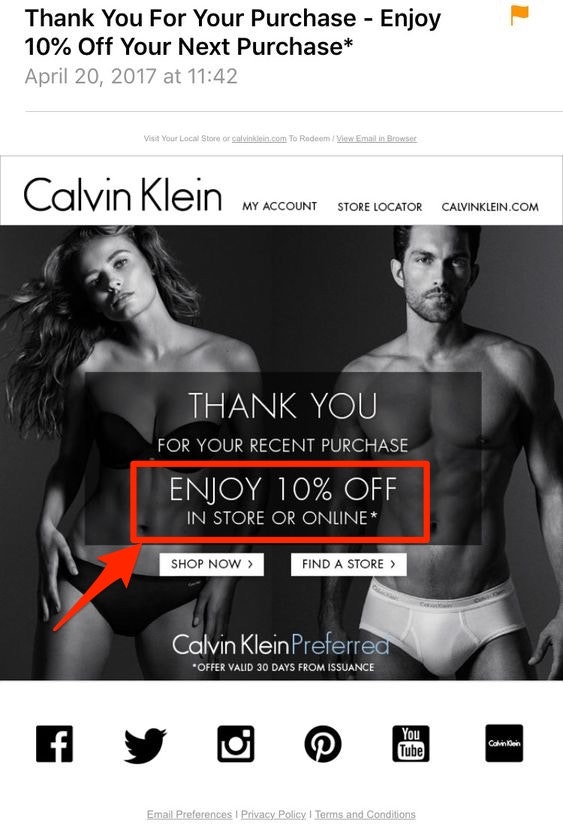
You can do this using an email service provider like Drip, or GetResponse.
Or, you can use a Shopify app like:
Shopify App: Conversio
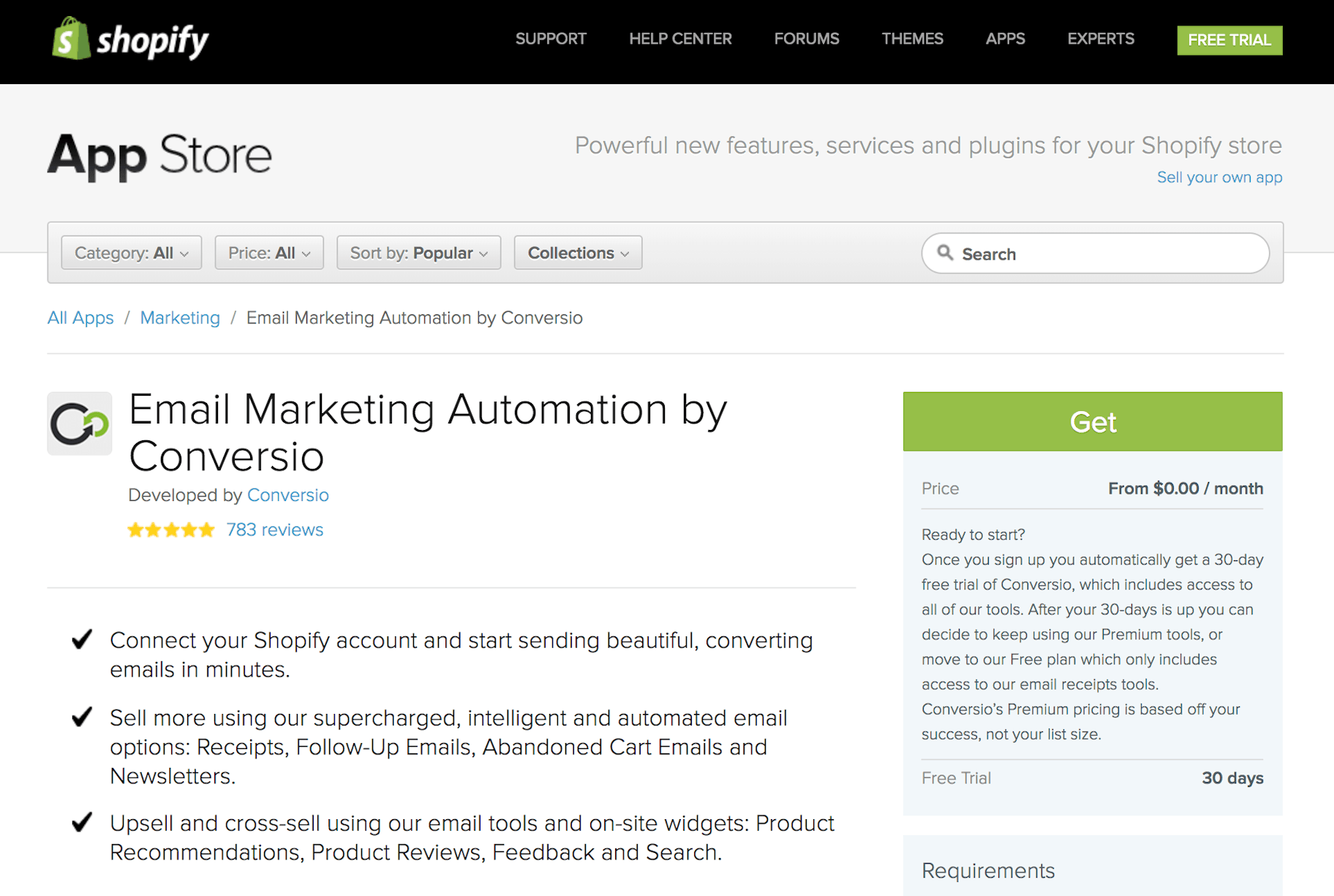
This app allows you to easily customize your purchase email receipts to feature other products and discounts.
One company used Conversio to offer coupons and boosted their revenue by 12% per receipt.
The best part?
Conversio is completely free!
The final tactic on our list:
-
Incentivize Customers to Purchase Your Upselling and Cross-Selling Offers
One of professor Gregory Mankiw’s ‘Ten Principles of Economics’ is, “People respond to incentives.”
Let’s face it: you already knew that…
The point is, you don’t just have to show related products or premium versions of products.
You can increase your average order value. This can be done by encouraging people to reach a certain spending goal to receive a reward.
In this cross-sell example, Erstwilder offers customers free shipping for orders over $100:
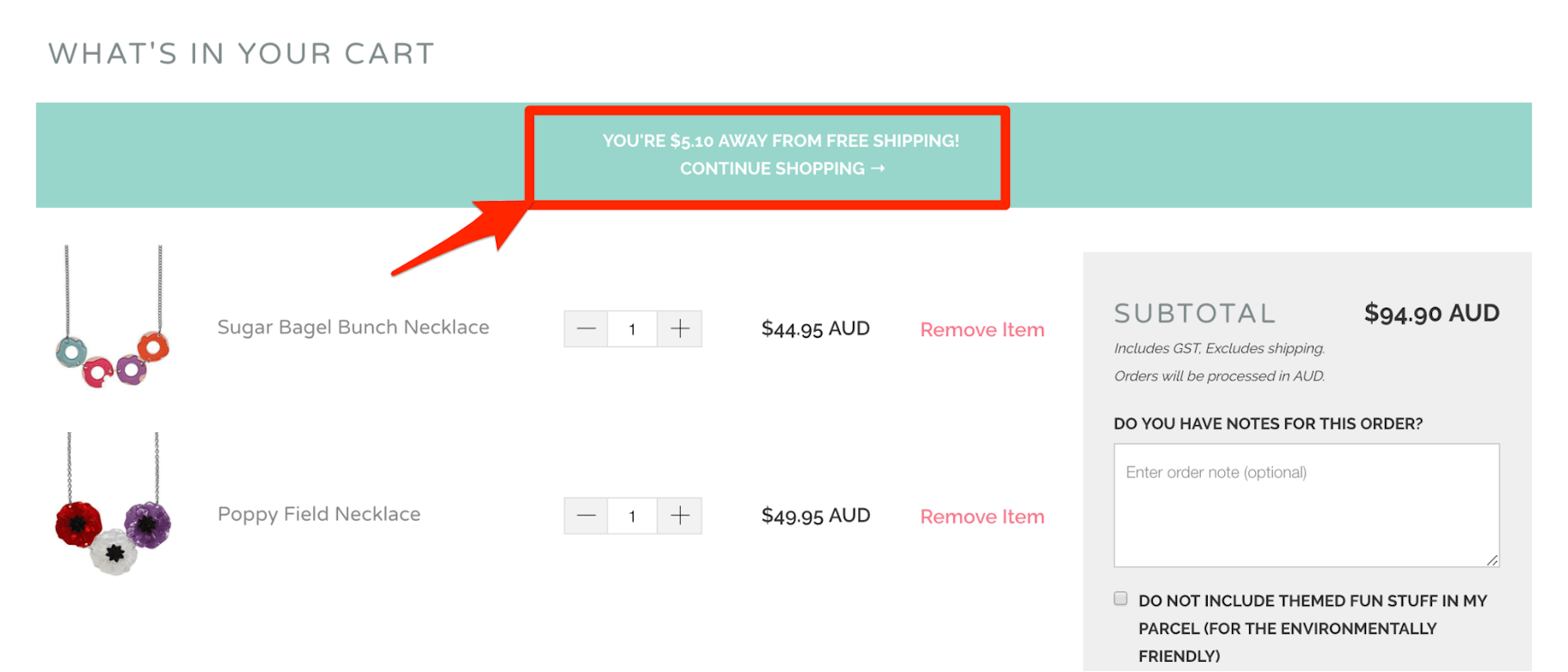
If you were only $5 away from free shipping, you might add something extra to your order to receive this offer.
And, in this next example, if the customer spends over $50, they’ll get a free gift:
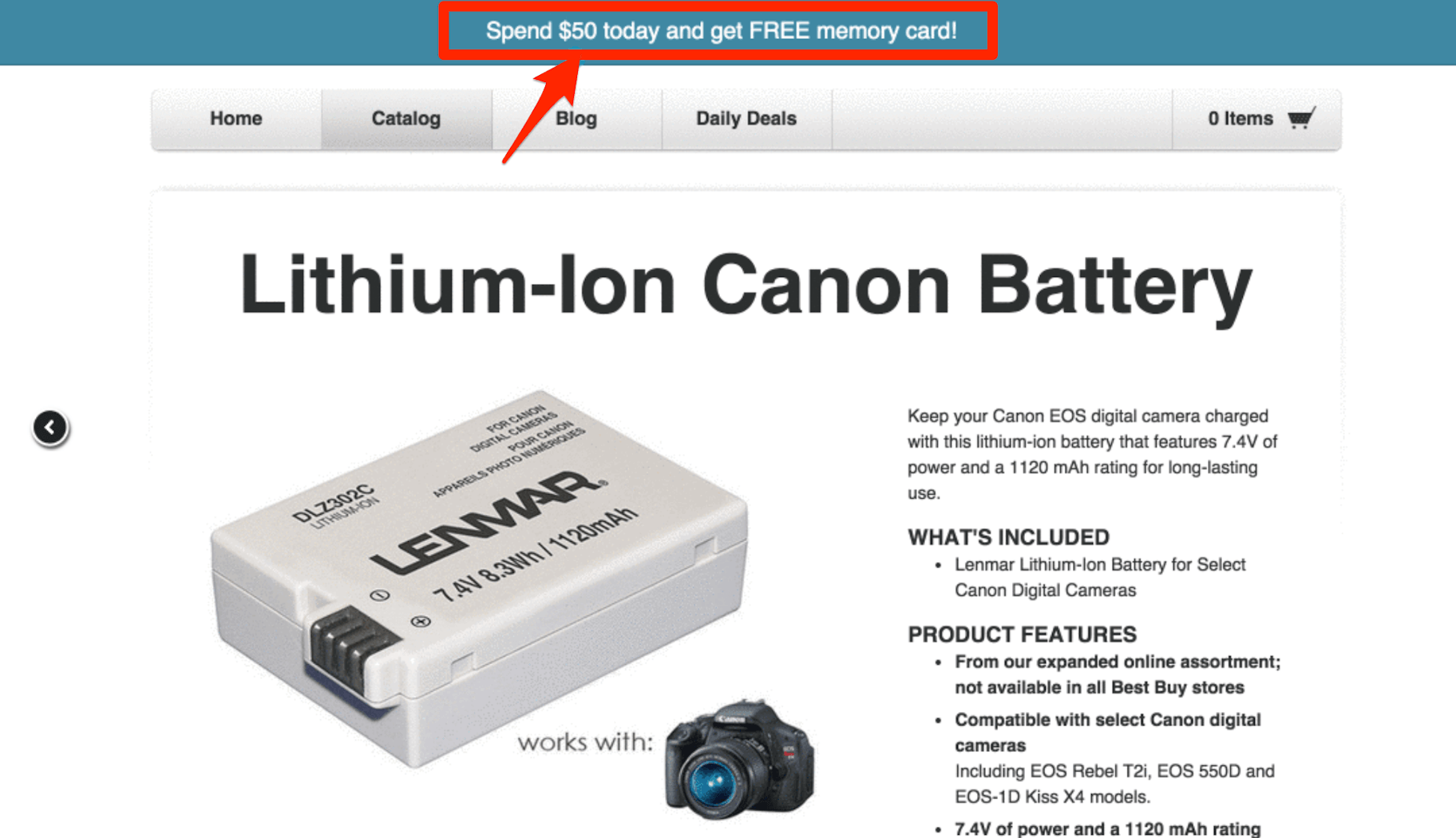
You can offer people a discount if they reach a certain spending goal.
To do this, check out this app from Bold Commerce:
Shopify App: Sales Motivator
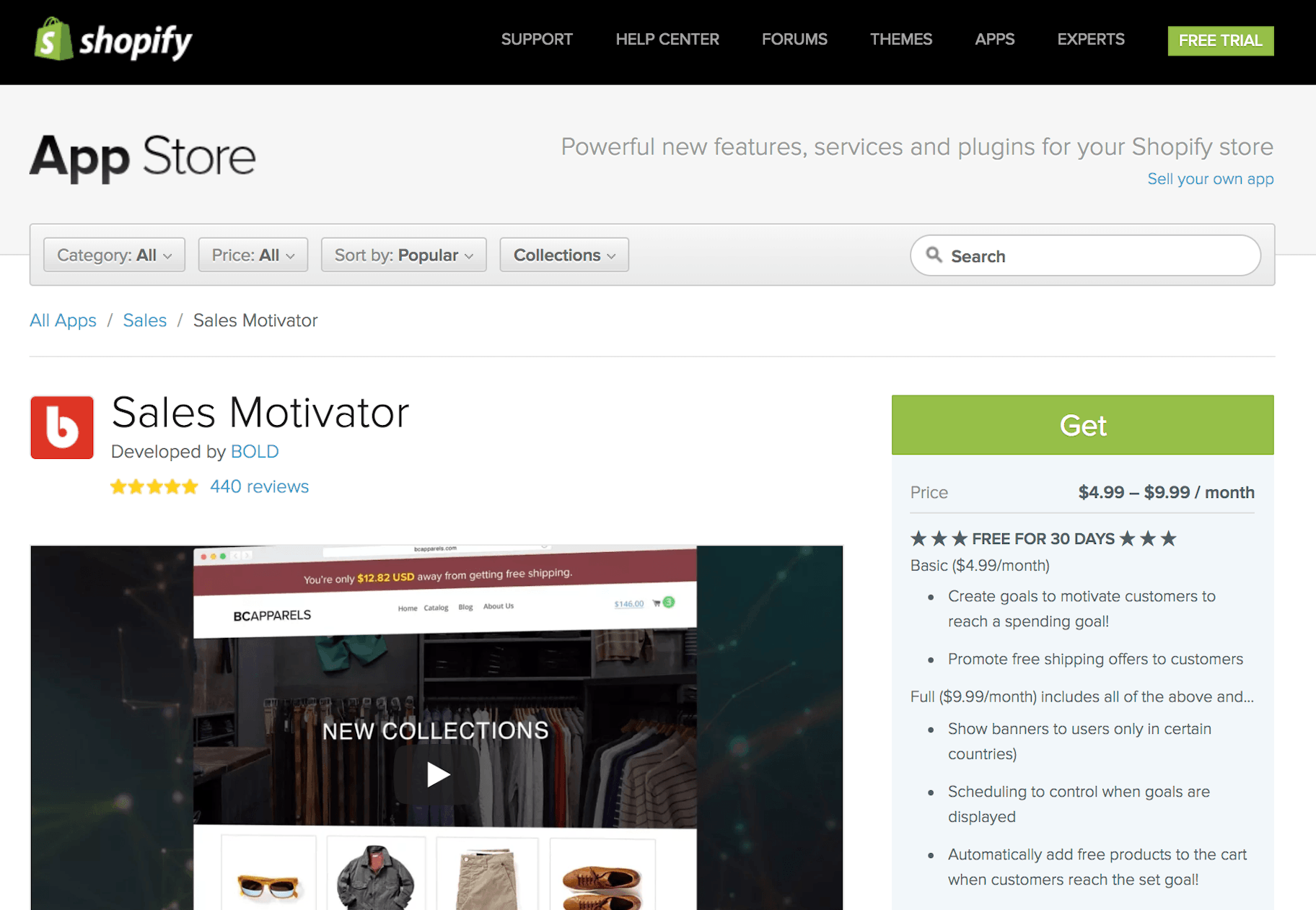
This app allows you to offer customers free shipping, a discount, or a free gift if they meet a certain order size.
It’s simple but powerful.
Sales Motivator is free for 30 days, and then $4.99 – $9.99 per month going forward, depending on the number of views you receive.



Summary
And there you have it!
You now know what upselling and cross-selling are, and how to use them to boost your average order value and grow your revenue.
Remember, when creating your upsell and cross-sell offers:
- Always put the customer experience first
- Only promote the most relevant and appealing offers
- Keep your upsell offers to less than 25% of the total cart value
You get three chances to upsell and cross-sell to your customers. These are before they purchase, during the checkout process, and when they purchase.
Be sure to use them all.
And, start with upselling first — remember, upselling performs 20 times better than cross-selling on product pages.
Lastly, don’t forget to take advantage of the incredible apps available on the Shopify App Store.
Do you have any questions about upselling or cross-selling? Let us know in the comment section below – we read all of them!
